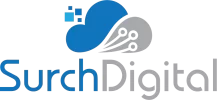
Marketing during tough economic times can feel like walking a tightrope. You know you need to continue promoting your products or services, but you’re also faced with tighter budgets and uncertain returns. In fact, according to a 2023 McKinsey report, businesses that continue to invest in marketing during a downturn are more likely to come out on top when the economy recovers. However, how can you market effectively without burning through your budget? In this article, we’ll break down the most effective strategies for marketing your business in a bad economy while keeping costs under control.
1. Refine Your Target Audience
In a tough economy, it’s essential to make sure every marketing dollar counts. That means you need to refine your target audience to ensure your messaging reaches the people who are most likely to convert. By narrowing your focus, you avoid wasting resources on reaching consumers who may not be in a position to buy or invest.
To refine your target audience:
- Analyze past customer data: Identify the demographics and behaviors of your best customers, then adjust your targeting to focus on similar profiles.
- Use segmentation: Break your audience into smaller, more targeted groups based on specific interests, behaviors, or needs.
- Survey your audience: Conduct simple surveys or polls to better understand what your current customers value most and how you can address their current concerns.
By focusing on a more specific audience, you can improve your lead generation and avoid casting a wide net that leads to wasted efforts and budget.
2. Shift Focus to Low-Cost Marketing Channels
Some traditional marketing channels are costly, but there are many affordable alternatives that can yield significant returns, even in tough economic times. Below are some marketing strategies that allow you to maintain visibility and generate leads without the hefty price tag:
- Content Marketing: By investing in high-quality, evergreen content such as blog posts, case studies, and how-to guides, you can drive organic traffic without spending heavily on paid ads. SEO (Search Engine Optimization) is a long-term strategy that can help your website rank higher in search results, bringing in more visitors over time with no ongoing cost other than your initial time and effort.
- Social Media Marketing: Social media platforms like Facebook, Instagram, LinkedIn, and Twitter offer free options for businesses to engage with their audience. With consistent posting, active engagement, and creating shareable content, you can increase brand awareness at no cost.
- Email Marketing: Email marketing remains one of the most cost-effective ways to nurture leads and maintain relationships with existing customers. By building an email list and delivering valuable content or special offers, you can maintain visibility and engagement without breaking the bank.
- Referral Programs: Encourage your existing customers to refer others in exchange for a discount, free service, or other incentives. Referral marketing costs less and often has a high return on investment (ROI), as people trust recommendations from friends and family more than any other form of advertising.
3. Leverage Partnerships and Collaboration
Partnership marketing is an excellent way to increase visibility without a large budget. By collaborating with other businesses or influencers, you can tap into their audience and increase your reach, often at little to no cost. This is particularly effective for small businesses, as you can share marketing efforts and mutually benefit from the partnership.
Here’s how to use partnerships effectively:
- Cross-promotion: Find non-competing businesses in your industry or local area that share a similar target audience and cross-promote each other’s products or services. This can be done via social media, email newsletters, or even through joint events.
- Co-host Events or Webinars: Collaborate with complementary businesses to host online or in-person events that bring value to your target audience. This allows you to pool resources for advertising and promotion, cutting down on costs while increasing brand exposure.
- Influencer Marketing: While working with influencers can be costly, you can often find smaller, micro-influencers with highly engaged audiences who may be willing to collaborate for a lower price or in exchange for products or services.
4. Reevaluate and Optimize Your Existing Marketing Efforts
During difficult economic times, it’s crucial to maximize the value of your existing marketing initiatives before launching new, expensive campaigns. By refining your current strategies, you can improve efficiency and achieve better results without increasing your spend.
- Analyze Campaign Performance: Review the performance of your marketing campaigns, focusing on key metrics like click-through rates, conversions, and customer acquisition costs. Identify which campaigns are delivering the best ROI and scale them up, while discontinuing or tweaking those that aren’t performing as well.
- Repurpose Content: Rather than constantly creating new content, repurpose existing assets. For example, turn blog posts into social media posts, create email newsletters from long-form content, or create a video summary from a webinar or presentation.
- Revisit Your Website: If your website isn’t optimized for conversions, you’re likely losing valuable leads. Take a look at your homepage, landing pages, and call-to-action buttons. Is the messaging clear? Is it easy for customers to take action? Even small tweaks to your website’s user experience can significantly improve your conversion rates without any extra advertising spend.
5. Prioritize Customer Retention Over Acquisition
During difficult economic times, acquiring new customers can be more challenging and expensive. Instead, focus on retaining your existing customers, who are already familiar with your brand and are more likely to make repeat purchases.
Here are some retention strategies:
- Loyalty Programs: Offer your loyal customers incentives like discounts, free products, or exclusive access to new products or services. A well-structured loyalty program can increase repeat business and word-of-mouth referrals.
- Personalized Marketing: Tailor your email, social media, and advertising campaigns to your existing customers, offering them relevant deals based on their past purchases or interactions with your brand.
- Customer Feedback: Ask your current customers for feedback on how you can improve your services or products. Use this data to make informed decisions and improve customer satisfaction. A happy customer is more likely to return and refer others.
6. Adjust Your Pricing Strategy
In tough economic times, price sensitivity increases. Customers are looking for the best value for their money, and if your pricing is not aligned with their expectations or current financial realities, they may go elsewhere.
Consider the following pricing strategies:
- Offer Discounts or Bundles: Offering limited-time discounts or bundling products and services can create a sense of urgency and provide customers with more perceived value for their money.
- Flexible Payment Plans: If your services or products are high-cost, offer installment plans or financing options. This helps customers manage their spending and can make larger purchases more accessible.
7. Be Agile and Adapt Quickly
In a rapidly changing economic environment, being able to quickly adjust your marketing strategy is crucial. The businesses that thrive are often the ones that are nimble and can adapt to new circumstances or customer needs. This might mean shifting marketing efforts, adjusting your messaging, or trying new channels.
- Monitor Industry Trends: Keep an eye on what your competitors are doing and stay updated on any changes in the market that could impact your business.
- Adjust Messaging: Economic shifts often lead to changing consumer priorities. If your target market’s needs have changed, be sure to pivot your messaging to reflect this. For example, if customers are more focused on affordability, emphasize value and savings in your marketing.
Final Thoughts – How to Market in a Bad Economy
Marketing during a bad economy doesn’t have to mean cutting your budget entirely. With the right strategies and a focus on efficiency, you can continue to promote your business effectively without overspending. By refining your target audience, leveraging low-cost channels, retaining existing customers, and optimizing your current efforts, you’ll be able to maintain visibility and drive revenue even in challenging times.
At Surch Digital, we help businesses navigate these tough times with smart, affordable marketing strategies. If you need help refining your marketing plan or executing these tactics, let’s connect and build a roadmap to success.




